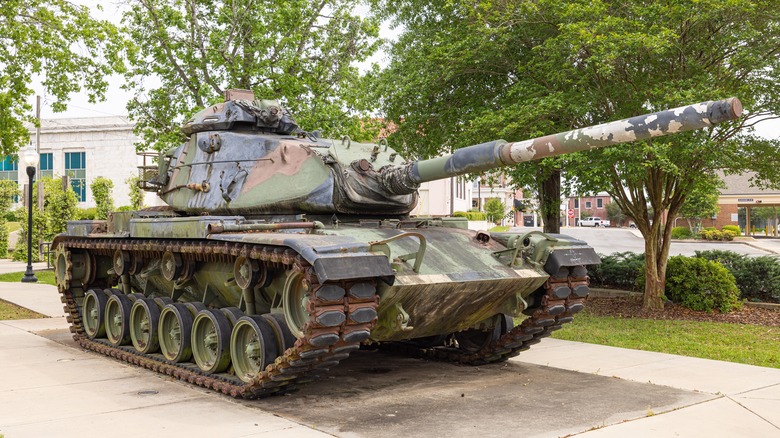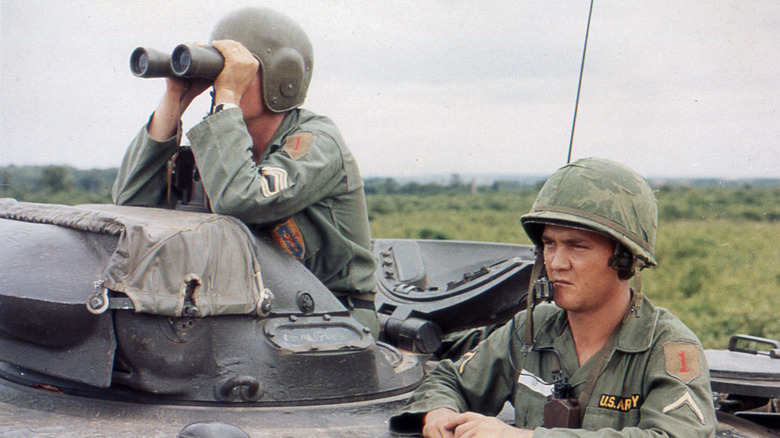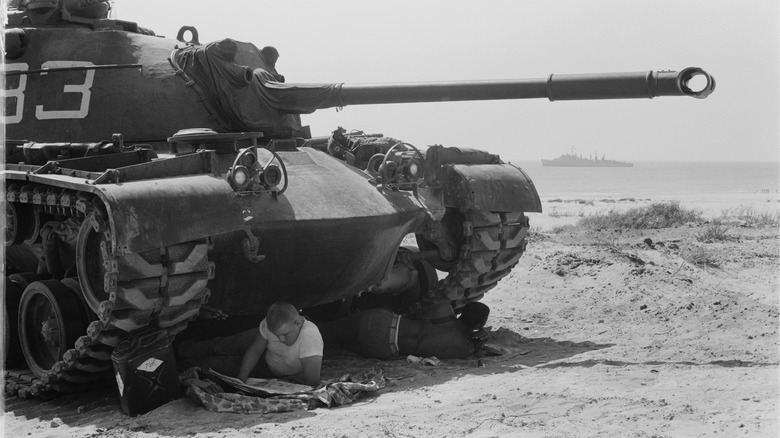The Reason The U.S. Military Retired The Famous M48 Patton Tank
Technology, in all its forms, is a very fickle thing. So many of us are desperate to keep up with the latest upgrades, even if they're only minor enhancements to iterations that came before. If only the latest devices will do, it can be a very expensive. Others, then, prefer old classics — devices and vehicle models — that continue to serve their purpose years, or even decades, down the line. Patton tanks, the M48 Patton in particular, are good examples of this.
One specific model, first unleashed in 1952, was equipped with mod-cons (or what qualified as such for the tank crews of the day) like heating systems, not to mention a certain degree of actual space to maneuver, afforded by dispensing with the gun in the hull.
Here's a closer look at the M48, its strengths, and the shortcomings that ultimately contributed to its retirement by the U.S. military. The iconic model is widely known today, but perhaps not always for the best of reasons.
The rise of the M48 Patton tank
The M48 Patton was developed in response to warfighting technology of other nations. The Cold War was a period when deterrence was crucial for the United States. As such, the threat of Soviet tanks such as the T-54s had to be addressed.
With this in mind, the flagship M47 was in need of an upgrade. A new medium tank, one that could meet the threat if it elevated to ground combat, was the intent. The resulting model — M48 — would be manufactured by Ford Motor Company and Fisher Body Division of General Motors.
With more ammunition storage and a range of different types, including anti-personnel and anti-tank models, its 90mm gun was fully capable of dealing devastating blows to targets. Protected by a metal body around 4.3 inches thick in places, it was quite formidable defensively too.
Around 12,000 tanks in the M48 family were ultimately produced. They served in the Vietnam War and were sold to militaries around the world, including the former West Germany. It continues to be fielded by nations such as Iran, Morocco, Turkey, and Greece. The United States, however, has retired the M48.
Tank tech rolls on
Given the haste with which the M48 was developed, it's perhaps inevitable that there were some flaws with the design. Its 12-cylinder engine, ran on regular gas, which made it volatile as well as limiting its performance. With the tank on the field, revised models would follow. The M48A1, for instance, offered a new design for the cupola and hatch, while the M48A3 was a diesel-powered upgrade and the M48A5E1 had rather more sophisticated night vision capabilities.
Though various forms of the M48 continue to serve around the world, the U.S. military moved on.
The first M48 models marked, as historian David Fletcher put it during an episode of Tank Chat for The Tank Museum, "the beginnings of a whole new generation of tank." By 1956 the shortcomings of its 90mm gun (in comparison to the T-55 of the Soviet Union, which wielded a 100mm gun) became outmoded. The next incremental upgrade to the M48, then, was a new tank entirely: the more-heavily-armored M60, with a more powerful diesel engine and armed with the M68 gun. It would be replaced, in turn, by the icon that is the M1 Abrams.


